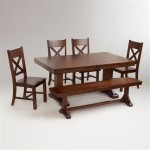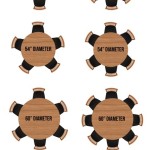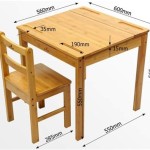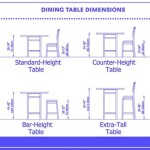Regulation Size Slate Pool Table: Dimensions, Components, and Considerations
The regulation size slate pool table represents the gold standard for serious players, tournaments, and dedicated game rooms. Its specific dimensions, construction materials, and performance characteristics are meticulously defined to ensure consistent gameplay and a professional experience. Understanding the nuances of a regulation size slate pool table is crucial for anyone considering a purchase or aiming to optimize their billiards skills.
The defining characteristic of a regulation size pool table is its 9-foot playing surface. While smaller tables exist, the 9-foot size adheres to the standards established by professional billiards organizations. This standardized dimension allows players to develop a consistent and transferable skillset, regardless of the specific location where they are playing.
Dimensions and Specifications
The term “9-foot pool table” refers to the length of the playing surface, measured from nose to nose of the cushions. The actual overall dimensions of the table will be larger, accounting for the width of the rails and the cabinet. A regulation 9-foot table will have a playing surface of 50 inches wide by 100 inches long. This translates to an overall table size, including the rails, generally falling between 59 inches wide and 109 inches long.
The height of the table is also regulated, typically ranging from 29 1/4 inches to 31 inches from the floor to the top of the playing surface. This height is carefully chosen to provide comfortable access for players of various statures and to ensure optimal cue ball control. Precise measurements are essential for maintaining consistent gameplay and fair competition.
Pocket openings on a regulation size table must also conform to specific guidelines. The corner pockets typically measure between 4 1/2 inches and 4 5/8 inches at the mouth, while the side pockets are slightly wider, usually falling between 5 inches and 5 1/4 inches. These pocket sizes, combined with the cushion profiles, contribute to the overall difficulty and challenge of the game.
The cloth used on a regulation size pool table is typically a wool blend, often with a directional nap. The nap runs from the head of the table toward the foot, influencing the speed and direction of the balls. The weight and weave of the cloth are also critical factors, impacting the table's overall playability. High-quality cloth provides a smooth, consistent surface that allows for accurate shots and controlled ball movement.
The Importance of Slate
The most critical component of a regulation size pool table is the slate bed. Slate provides a perfectly flat and rigid surface essential for accurate ball roll and consistent gameplay. Unlike wood or other materials, slate is resistant to warping, sagging, and temperature fluctuations, ensuring a level playing field for years to come.
Regulation pool tables typically utilize three pieces of slate, each ranging from 3/4 inch to 1 inch in thickness. The thickness of the slate directly impacts its rigidity and resistance to vibration. Thicker slate provides a more stable and consistent playing surface, particularly important for advanced players who rely on precise shot execution.
The seams between the slate pieces are meticulously filled and sanded to create a seamless playing surface. Any imperfections or unevenness in the slate can significantly affect ball roll and trajectory. Professional installers utilize specialized equipment and techniques to ensure that the slate pieces are perfectly aligned and that the seams are virtually undetectable.
The weight of the slate is a significant factor in the overall stability and durability of the pool table. A regulation size slate pool table can weigh upwards of 700 to 1000 pounds, primarily due to the weight of the slate. This weight helps to prevent the table from shifting or moving during gameplay, ensuring a stable and consistent playing surface.
Slate is also crucial for resisting the effects of humidity and temperature changes. Wood can warp and change shape with fluctuations in the environment, whereas slate will maintain its shape and flatness for generations. This makes slate the ideal choice for constructing a pool table that provides decades of consistent play.
Cushions, Rails, and Frame Construction
The cushions, also known as rails, are another critical component of a regulation size pool table. They are typically made of high-quality rubber that provides consistent rebound and accurate ball reflection. The profile and composition of the cushions are carefully engineered to ensure predictable ball behavior.
The rubber used in pool table cushions must meet specific standards for rebound and durability. The cushions must provide a consistent and predictable bounce across the entire playing surface. High-quality cushions will maintain their elasticity and rebound characteristics for many years, ensuring consistent gameplay.
The rails are typically made of solid hardwood, such as maple or oak, and are covered in matching cloth. The rails provide a solid and stable surface for the cushions and also contribute to the overall aesthetic appearance of the table. The rails are securely fastened to the slate bed to ensure a consistent and uniform playing surface.
The frame of a regulation size pool table is typically constructed of solid wood or a combination of wood and metal. The frame provides structural support for the slate bed and cushions, and it must be strong and stable to withstand the constant pressure of gameplay. The frame is also responsible for distributing the weight of the table evenly across the floor.
Legs are an integral part of the pool table's structural integrity. They bear the considerable weight of the slate and frame. Their design can vary widely, from simple turned legs to elaborate, decorative options. The legs must be securely attached to the frame to prevent wobbling or instability.
The internal framing of the table is crucial for preventing sag or warping over time. Crossbeams and reinforced corners are necessary to provide adequate support. The sturdier the frame, the longer the table will maintain its level playing surface.
The cabinet, which houses the frame and legs, is typically made of wood or a wood veneer. The cabinet provides a decorative finish and protects the internal components of the table. The cabinet can be customized with various finishes and designs to match the decor of the game room.
Factors Influencing Playability
Several factors beyond the core components contribute to the overall playability of a regulation size slate pool table. These include proper leveling, consistent maintenance, and the quality of the accessories used.
Proper leveling is essential for accurate ball roll. Even a slight imperfection in the level of the table can significantly affect the trajectory and speed of the balls. Professional installers use precise leveling equipment to ensure that the playing surface is perfectly flat and level. Ongoing adjustments may be required as the building settles.
Regular maintenance is crucial for preserving the playability and longevity of the pool table. This includes brushing the cloth regularly to remove dust and debris, cleaning the balls to maintain their smoothness, and inspecting the cushions for wear and tear. Replacement of the cloth is often required periodically and is best left to a professional table mechanic.
The quality of the accessories used, such as the cues, balls, and chalk, also plays a significant role in the overall playing experience. High-quality cues provide better control and accuracy, while high-quality balls roll more smoothly and consistently. The type of chalk used also affects the grip and control of the cue ball.
The lighting above the table is critical for optimal visibility and accurate shot alignment. Proper lighting should provide even illumination across the entire playing surface, minimizing shadows and glare. Specialized pool table lighting fixtures are designed to meet these requirements.
The surrounding environment of the pool table can also impact gameplay. Adequate space around the table is essential for comfortable cueing and maneuvering. Temperature and humidity should also be controlled to minimize the effects on the slate and cloth.
In summary, a regulation size slate pool table represents a significant investment that provides a superior playing experience and enduring quality. The meticulously defined dimensions, the critical role of the slate bed, and the consideration of all components contribute to a table that meets the standards of professional billiards. Understanding these features is essential for making an informed purchase and maximizing enjoyment of the game.

How To Measure A Pool Table 4 Dimensions

Beach Pool Table San Moritz Sizes 7 8 And 9 Foot Billiards Direct

New Dynamo Regulation Size 9 Slate Pool Table Palestine Ubuy

Hathaway Augusta 8 Ft Non Slate Pool Table Mahogany Finish Com

Supreme Match Metallic Brown Slate Bed Pool Table 7ft Size

Hathaway Augusta 8 Ft Non Slate Pool Table In Walnut Finish Bg2670 The Home Depot

Supreme Winner Pool Table All Finishes 6ft 7ft A1 Tables Direct

Regulation Size Antique Brunswick Tiger Oak 8ft Slate Pool Table With Ball Return And Leather Pocket Shrouds 40735004 Auctionnia Com

Barrington Billiards 8 5 Arlington Slate Tech Drop Pocket Table With Pool Ball And Cue Stick Set Com

What Size Is A Professional Pool Table Home Leisure Direct








